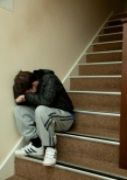Self Injurious Behaviour and Autism

Self injurious behaviour is any form of aggression that is directed by an individual against themselves which results in physical damage. That damage may include bruising, lacerations, bleeding, bone fractures and breakages, and other tissue damage.
Self injurious behaviour is very common in people on the autism spectrum, especially if they also have learning disabilities. Sometimes the self injurious behaviour is transitory and short in duration, lasting only days or weeks, while at other times it can persist for months or years.
There are risk markers associated with some people on the autism spectrum which make it more likely that they will self injure. These include internal markers, such as specific genetic syndromes or painful medical conditions; interpersonal markers, such as self injury becoming a learnt behaviour; and external markers, such as a lack of control over their living environment. In practice an individual on the autism spectrum may self injure for a range of different but inter-related reasons.
Self injurious behaviours can cause all sorts of problems for people on the autism spectrum beyond the immediate damage to a specific part of the body. It can cause damage to other parts of the body, such as the brain, and even lead to death. Self injurious behaviour can also result in people being further restricted in what they can do and being further excluded from society.
There are a number of interventions (treatments, services and other forms of support) commonly used to reduce self injurious behaviours in people on the autism spectrum. These include psychological approaches (such as changing the way you ask someone to do something) medications (such as antipsychotics), and other approaches (such as physical exercise). We believe that treating the person with respect, listening to what they say and giving them choices over their lives are also important.
There is very little high quality research evidence on the effectiveness of most interventions for people on the autism spectrum, although this does not necessarily mean that they do not work.
The National Institute for Health and Care Excellence (NICE) and the Social Care Institute for Excellence (SCIE) have developed guidelines on dealing with challenging behaviours – which includes self injurious behaviour. These guidelines stress the importance of developing a personalised behaviour support plan based on a functional assessment of the challenging behaviours in each individual.
Further research is needed to examine self injurious behaviours in people on the autism spectrum. There is particular need for studies which
- identify the factors that may cause self injurious behaviour and specific forms of self injurious behaviours in specific groups on the autism spectrum (age, gender, diagnosis, co morbid genetic condition, IQ etc)
- Identify which groups of people on the autism spectrum with self injurious behaviour might benefit most from which interventions
- involve people on the autism spectrum to review the causes, efficacy and ethical basis of interventions in this area including individuals who may be non-verbal
- Updated
- 02 Nov 2017

